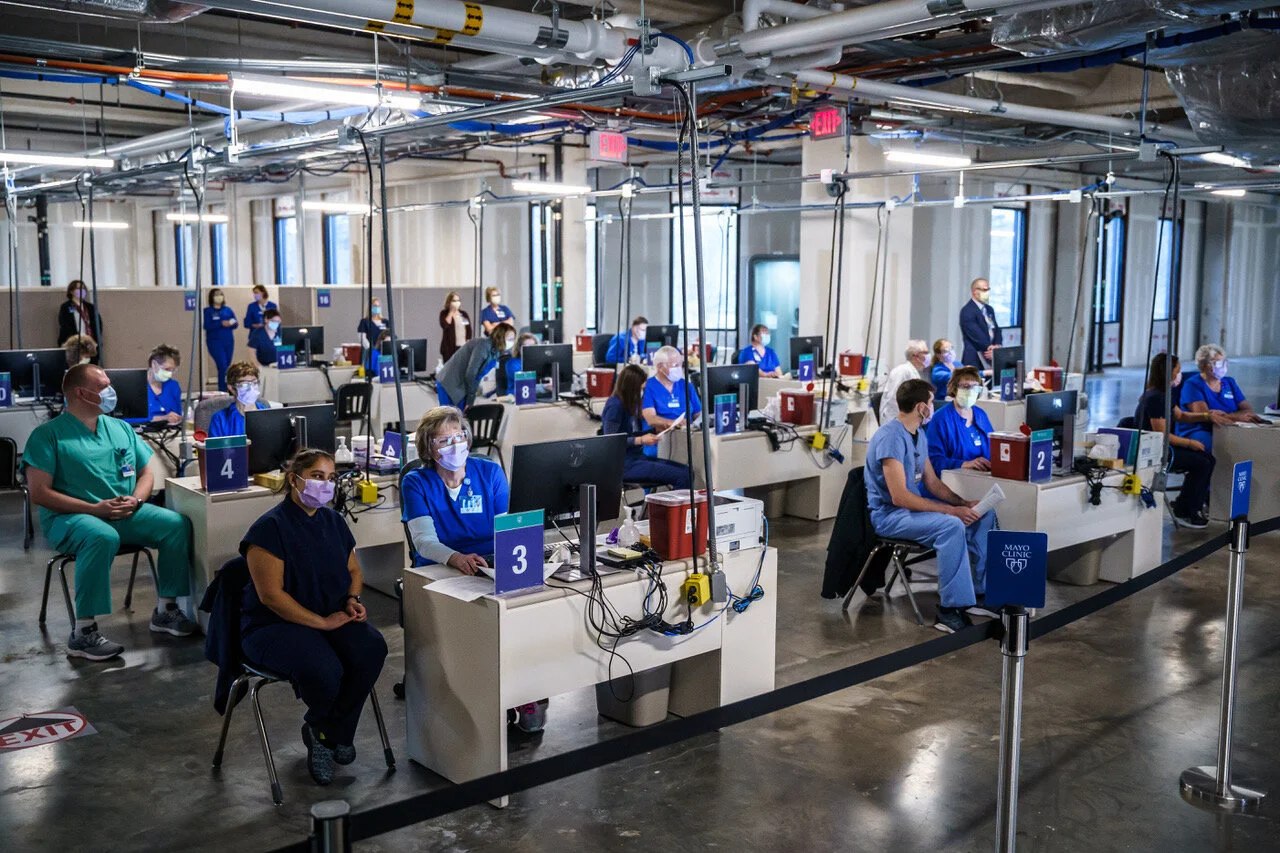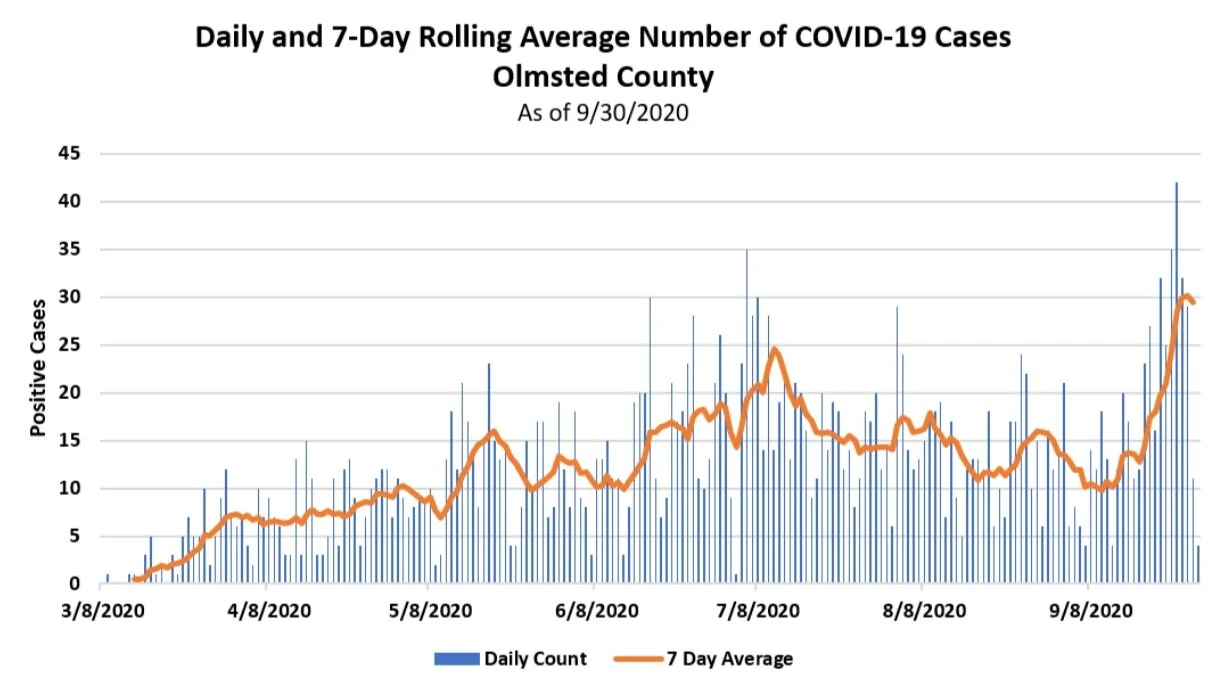Encouraging news: Covid cases continue downward trend in Olmsted County
While Olmsted County’s Covid-19 situation remains serious, a positive trend has taken hold, according to the top official at Olmsted County Public Health: new cases are down, hospitalizations are down, and optimism on vaccines provides the clearest path yet to ending the pandemic.
Public Health reported 586 new cases of the virus across Olmsted County last week — still the sixth-highest weekly total of the pandemic, but the lowest total since late October. The same can be said for seven-day rolling averages: those numbers continue their month-long slide, now under 90 after peaking above 120.
Seven-day rolling averages of hospitalizations have finally leveled off as well, after six weeks of near-constant increases. In fact, Mayo Clinic reported its lowest hospitalization count since October this week: 55 patients are now hospitalized with Covid-19 at Rochester’s Mayo Clinic hospitals, roughly half of the peak from mid-November.
Public Health Director Graham Briggs said the county’s latest Covid report was “quite encouraging,” as vaccines start to roll into the area and hospital capacity begins to come under control. Still, he cautioned that Olmsted County is still nowhere near pre-spike levels.
“I think as we start to vaccinate people, it really does signal the beginning of the end,” said Briggs. “But we need to remember there’s still a lot of virus in the community. We still need to be wearing our masks, and limiting gatherings as much as we can.”
Perhaps the most encouraging news, though, comes from what we don’t see in the latest weekly report: after fears of a post-Thanksgiving spike in cases worried health care officials across the Midwest, the spike ended up being minimal at best.
Rolling averages did rise slightly during the first week of December, said Briggs, but quickly returned to the downward trend that has defined 2020’s final month.
“There was a little bit of a peak, and maybe Thanksgiving had something to do with it, but it was small and it’s headed right back down,” said Briggs. “We didn’t see some huge, super-spreading, amplifier of transmission in the community — and that’s a testament to how serious the people of Olmsted County have taken this.”
Briggs did caution, however, that not every indicator is improving. Percent-positive rates continue to stick above 10 percent, roughly unchanged from the early November peak in cases and much higher than the stated goal of 5 percent. Those numbers could be skewed by Public Health’s decision to move Covid-19 testing away from Graham Park; Briggs said more analysis would be needed to fully determine the causes behind the elevated percent-positive rates.
Still, as Olmsted County enters the back half of the surge, it seems that we have largely avoided the worst-case scenarios seen in other counties: multiple deaths per day, with overwhelmed hospital systems.
Some have chalked up Olmsted County’s relative success in managing the pandemic to the presence of a robust health care system — and while Briggs acknowledged that reality, he says he believes it’s due to a greater mentality across the entire county.
“This says something about our community,” said Briggs. “I think it’s easy to label it as ‘oh, it’s the Med City,’ but I think it shows how seriously the broader community has taken this. They’ve made the decision to protect their loved ones, neighbors, and their relatives — regardless of if they work in medicine or not.”
Mayo prepares for the vaccine
Optimism continues on the vaccine front, after Olmsted Medical Center received its first shipment of nearly 1,000 doses on Monday. Meantime, Mayo Clinic also expects to receive roughly 3,000 doses in the near future, according to Dr. Andrew Badley, chair of the Clinic’s Covid-19 task force. If all goes to plan, he added, the first wave of Clinic staff could be vaccinated in the next two to three weeks.
From there, both OMC and Mayo will go down the tiering list set forth by the Minnesota Department of Health — and Briggs says it may not be long until family gatherings become possible again, with elderly and high-risk individuals likely getting the opportunity to be vaccinated in a month’s time.
“We’re heading to where we want to be, but we’re not there yet,” said Briggs. “Why not have Christmas on Valentine’s Day this year?”
Isaac Jahns is a Rochester native and a 2019 graduate of the Missouri School of Journalism. He reports on politics, business and music for Med City Beat.
Cover graphic courtesy Olmsted County Public Health








